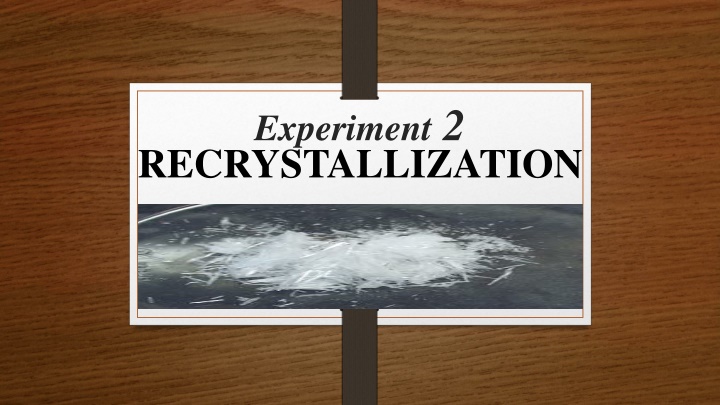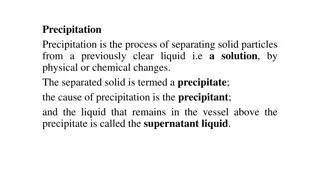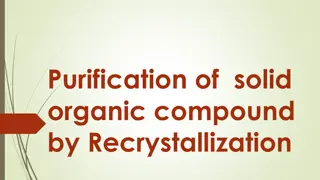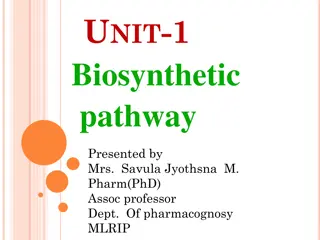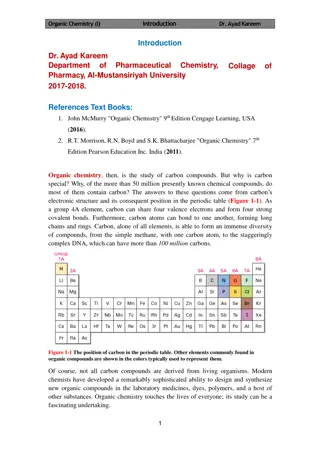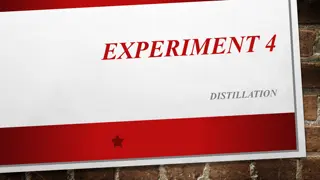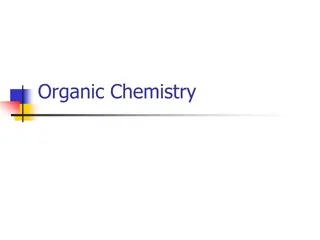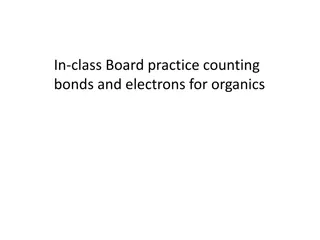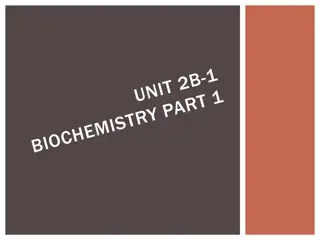Guide to Recrystallization Techniques for Purifying Solid Organic Compounds
Solid organic compounds obtained from organic reactions are often impure and require purification through recrystallization. This process involves choosing a suitable solvent, testing solubility, and using decolorizing charcoal to remove impurities. Proper solvent selection is crucial for successful recrystallization. Key steps include solvent testing with a pure sample, consideration of the solubility at different temperatures, and the use of decolorizing charcoal to remove colored impurities. By following these techniques, high purity crystals can be obtained for analytical or experimental purposes.
Download Presentation

Please find below an Image/Link to download the presentation.
The content on the website is provided AS IS for your information and personal use only. It may not be sold, licensed, or shared on other websites without obtaining consent from the author.If you encounter any issues during the download, it is possible that the publisher has removed the file from their server.
You are allowed to download the files provided on this website for personal or commercial use, subject to the condition that they are used lawfully. All files are the property of their respective owners.
The content on the website is provided AS IS for your information and personal use only. It may not be sold, licensed, or shared on other websites without obtaining consent from the author.
E N D
Presentation Transcript
Experiment 2 RECRYSTALLIZATION
Solid organic compounds when isolated from organic reactions are usually impure; they are usually contaminated with small amounts of other compounds that are produced along with the desired compound. The purification of impure crystalline compounds is usually done by recrystallization from a suitable solvent or a mixture of solvents. Liquids are customarily purified by distillation , while solids are purified by recrystallization crystallization). Insoluble impurities and colored impurities can be removed from hot solvent through the us of activated carbon and filtration . (sometimes called simply
Choosing a solvent for recrystallization: The proper choice of a solvent is an important part of the art of crystallization. The ideal solvent should: 1.Be chemically inert toward the solute. 2.Dissolve the solute readily at its boiling point but sparingly at low temperatures (0 25 0C). 3.Dissolve impurities either very easily or not at all. 4.Be highly volatile so that it can readily be evaporated from the crystals. 5.Not be flammable, of low cost, and of low toxicity.
Practically, to choose a good solvent take about (0.1 gm) of the compound to be purified (a pure sample) and try to dissolve it in (1 ml) of the solvent; 1- if it dissolves in the cold solvent, the solvent will not be good for recrystallization 2- if it dissolves in the solvent with heating, the solvent will be good for recrystallization 3- if it does not dissolve in the solvent even with heating, the solvent will not be good for recrystallization. Solvents extensively used for recrystallization include water, ethanol, chloroform, ether, acetone, and benzene.
Decolorizing charcoal: Frequently, samples to be purified may contain soluble colored impurities that may cause the solution and the crystals to be colored when they should be colorless; they dissolve in the boiling solvent and are adsorbed on the crystals produced upon cooling. These impurities can be removed by treating the colored sample with decolorizing (activated) charcoal that is composed of fine carbon particles with a large active surface on which the colored impurities will be adsorbed.
Charcoal is added to the hot solution before boiling and the solution is kept hot at or near the boiling point for about 3-5 minutes with shaking to wet the charcoal. The solution is then filtered through a fluted filter paper. No more charcoal than actually needed should be used because any excess amount will cause the desired compound to be adsorbed on the charcoal. Charcoal is not added at the boiling point of the solvent because its particles function as thousands of boiling chips causing the solution to boil over and foam.
Recrystallization using mixed solvents: This is applied when your compound is readily soluble in a solvent at room temperature, and at the same time is not soluble in another solvent. The two solvents must be completely miscible with each other such as alcohol and water, ether and pentane, and glacial acetic acid and water. So the compound is dissolved in the solvent that it is soluble in, charcoal is used if required, and the solution is filtered to get rid of the insoluble impurities. Then the over solvent (in which the compound is insoluble) is added to the filtrate gradually until turbidity appears. The mixture is then left aside to facilitate crystallization.
Notes: 1- If crystallization does not take place scratch the sides or the bottom of the container below the surface of the solution with in glass rod, add a small crystal of the pure compound, or evaporate some of solvent to induce the crystallization process. 2- The funnel, filter paper, and the container of the solution should be kept hot through out the filtration process to prevent the deposition of the crystals on the filter paper or on the neck of funnel. Therefore, it is recommended to wash the filter paper after completing the filtration process with a small amount of the hot solvent. 3- Use a minimum volume of the solvent to prevent the loss of the compound because large volumes of the solvent will keep most of the compound dissolved in it.
FT-IT Spectral data cm-1 of the benzoyl glycine - 1 Comp. Group CH (aromatic) Abso ption cm 3100 - 3000 1815 - 1785 r 550 C-Cl - Benzoyl chloride 2999 2500 1706 2840 CH (aliphatic) OH (carboxylic acid) C=O (carboxylic acid) NH - - - Glycine 1720 3400 3300 - 2 1690 1020 C-N -
